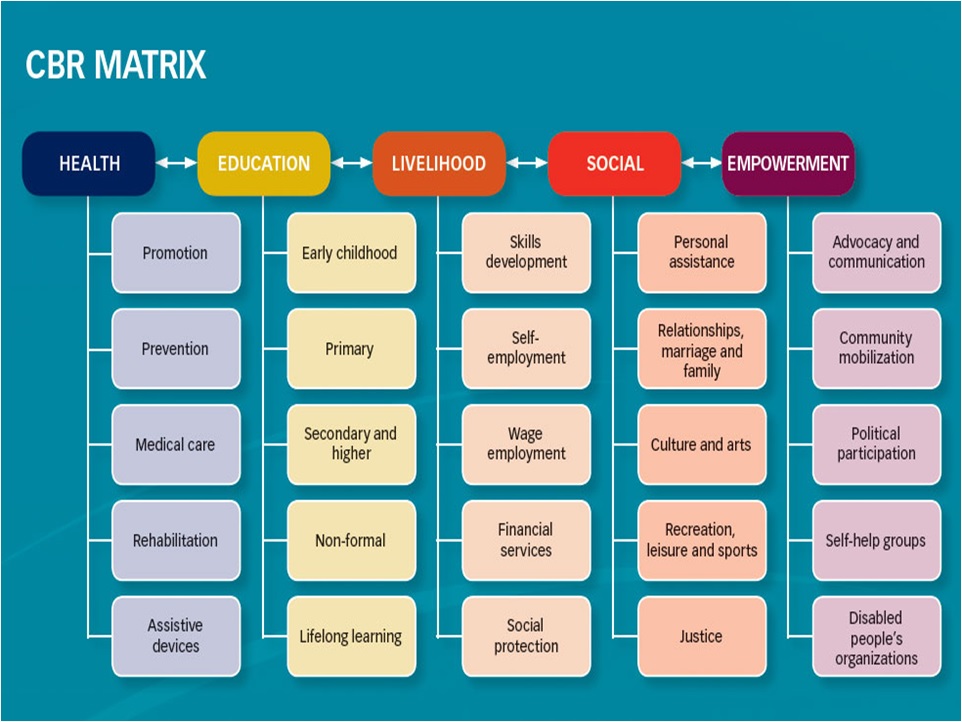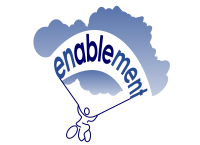CBR and Disability Inclusive Development
Community Based Rehabilitation (CBR)
CBR was initiated by the WHO in 1978. The objective of CBR is to improve access to rehabilitation services for people with disabilities in low- and middle-income countries, by making use of resources within the country. Over the past 33 years, CBR has evolved into a multi-sectoral strategy addressing the various needs of persons with disabilities, ensuring their participation and inclusion in society which enhances their quality of life. CBR ensures that persons with disabilities and their families benefit from the health, education, livelihood and social sectors.
CBR is usually conducted in natural community settings, such as at a person with a disabilities’ homes rather than in a formal delivery settings such as hospitals or center-based environments. Greater collaboration with the community and empowerment of the support network of people with disabilities and services surrounding the person with a disability is possible in a CBR model thus enabling the person with a disability to make sustainable gains. For example, family members may be involved in rehabilitation sessions for the purposes of education, livelihood, social participation and empowerment. Furthermore, collaboration with others (work colleagues, friends, and paid support workers) who may be in a position to help the person with a disability to achieve their goals, is also possible in a CBR model.
The exact nature of CBR services will depend on the needs of the persons with a disability within their setting, such as the presence of disability support, environmental resources including availability of disability supports, the availability of skills and expertise, feasibility and availability of funding.
Disability Inclusive Development (DID)
Disability-inclusive development (DID) is an approach, which particularly focuses on the rights and inclusion of people with disabilities. It actively seeks to ensure the full participation of people with disabilities as empowered self-advocates in all development processes and emergency responses. Also, it works to address the barriers which hinder access and participation of people with disabilities.
Relation between CBR and DID
CBR and DID are two roads leading to the same goals: realising societies in which people with disabilities like any other person - regardless of age, gender, ethnicity, race, class, religion, sexuality or any other characteristic - participate fully and are enabled to reach their full potential. Our documentary CBR for Inclusive Development gives a clear picture of how we see the reality of CBR and disability inclusive development in the field.
A comprehensive overview of the several spheres of interest (life domains) of CBR is depicted in the WHO CBR Matrix, see picture below:

Click for more information on CBR:

